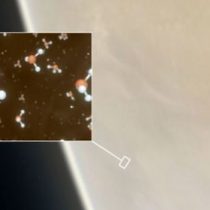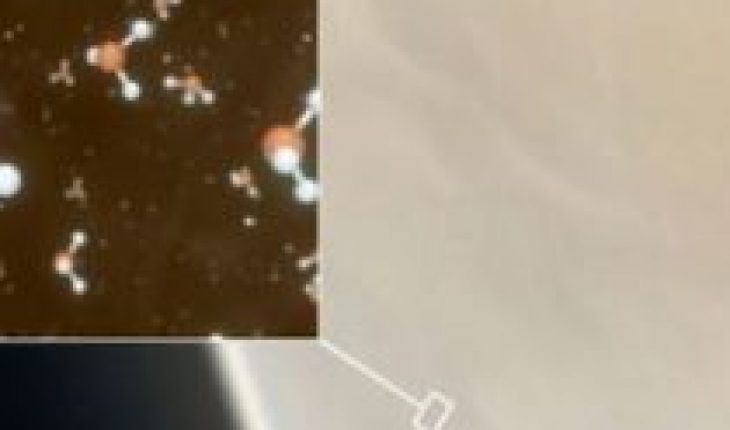
“When we got the first hints of phosphine on the venus spectrum, it was a shock“, said team leader Jane Greaves of Cardiff University, quoted in a statement.
The revolutionary find that shows that there may be life in the clouds of Venus
The group believes that their discovery is significant but recognizes that confirming the presence of “life” needs much more work.
What is phosphine?
Phosphane or phosphine gas (PH3) is a molecule made up of one phosphorus atom and three hydrogen atoms.
Phosphine is a colorless, toxic gas smelling of decaying garlic or fish, described by the U.S. Agency for the Registration of Toxic Substances and Diseases (ATSDR).
Phosphine was found in the clouds of Venus at an altitude of between 50 and 60 km
It is also extremely flammable and explosive. It can spontaneously ignite in contact with air.
It is on the U.S. Occupational Safety and Health Administration (OSHA) Hazardous Substances List as it is toxic to humans.
It mainly affects the cardiovascular and respiratory system. Inhaling it can range from irritating the nose to damaging the lungs. It can also cause dizziness and nausea, among other symptoms.
Why a team of scientists wants to change the concept of what “life” is (and how it could revolutionize missions looking for aliens)
What is the relationship between phosphine and life?
On our planet phosphine is associated with life because it is found in microbes that live in the bowels of animals.
For example, since PH3 was found on rocks that had penguin droppings.
The substance is also present in oxygen-poor environments such as swamps.
The phosphine molecule is made up of one phosphorus atom and three hydrogen atoms
But in general, phosphine is related to insecticides and is produced industrially.
“Phosphine is used as a fumigant, as an impurification agent in electronic components and in chemical synthesis,” says new Jersey’s Department of Health and Senior Services.
Why 36 is the number of extraterrestrial civilizations that could be contacted according to a new study
Professor Greaves and her colleagues first identified phosphine on Venus with the help of the James Clerk Maxwell telescope in Hawaii, and then confirmed their presence using Atacama’s in Chile.
Phosphine has a distinctive “absorption line” that these radio telescopes perceive at a wavelength of approximately 1 millimeter.
The phosphine signal was confirmed by the Atacama telescope in Chile
The gas can be observed at average latitudes of the planet at approximately 50-60 km altitude.
The concentration is small, forming only 10-20 parts in every billion atmospheric molecules. But in this context, that’s a lot.
Why it’s good news that there are more viruses on Earth than stars in the universe
Then the team of scientists now wonders how phosphine got there if there is no animal droppings and less industry to make it.
Along with details of the phosphine’s findings on Venus, astronomers published in the journal Nature Astronomy various researches they have done to try to prove that this molecule could have a natural and non-biological origin.
However, the real reason for the presence of phosphine in the clouds of Venus is still unknown.





